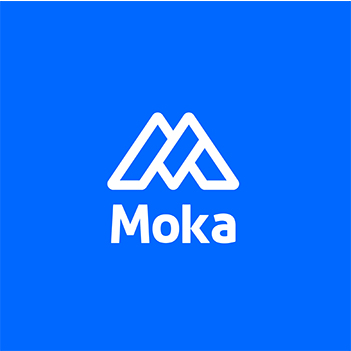How to Leverage Applicant Tracking Systems for Better Onboarding in Hong Kong

An applicant tracking system can revolutionize how you approach onboarding in Hong Kong. By automating repetitive tasks and centralizing data, it simplifies the process for both HR teams and new hires. This efficiency not only saves time but also ensures compliance with local labor laws, which is crucial in Hong Kong's regulatory environment. Moreover, it enhances the candidate experience by providing clear communication and a seamless transition into their new role. Adopting employee onboarding software tailored to Hong Kong’s unique challenges empowers you to create a structured and engaging onboarding journey.
Key Takeaways
Implementing an Applicant Tracking System (ATS) can streamline onboarding by automating repetitive tasks, saving time for HR teams and new hires.
Centralizing candidate and employee data in an ATS enhances collaboration and ensures that all onboarding steps are completed efficiently.
Effective communication through automated updates and notifications helps new hires feel supported, leading to higher retention rates.
Customizing onboarding workflows to align with local labor laws and cultural norms is crucial for compliance and employee satisfaction in Hong Kong.
Utilizing analytics from an ATS allows HR teams to identify bottlenecks in the onboarding process and make data-driven improvements.
Integrating ATS with other HR tools ensures a seamless flow of information, enhancing overall efficiency and reducing errors.
Personalizing the onboarding experience fosters loyalty among new hires, making them feel valued and increasing the likelihood of long-term retention.
Understanding Applicant Tracking Systems and Their Role in Onboarding

What Is an Applicant Tracking System?
An applicant tracking system is a digital tool designed to simplify and optimize the hiring and onboarding process. It acts as a centralized hub where HR teams can manage job postings, track applicants, and streamline workflows. By automating repetitive tasks, it reduces manual effort and ensures that no critical steps are overlooked. This software also enhances data security by digitizing and centralizing sensitive information, making it easier to manage and protect.
For HR professionals, an ATS software serves as a virtual assistant. It organizes candidate data, automates communication, and integrates with other platforms like job boards and social media. This integration ensures a seamless flow of information, helping you manage the entire hiring cycle efficiently. Beyond recruitment, the best employee onboarding software includes features that support new hires, such as task assignments, welcome emails, and access to essential resources.
How ATS Enhances the Onboarding Process
Automating Administrative Tasks
Automation is one of the most valuable features of an applicant tracking system. It eliminates the need for manual paperwork by digitizing forms and processes. For example, new hires can complete documentation online before their first day, saving time for both HR teams and employees. Automated workflows also ensure that every step of the onboarding process is completed on time, reducing delays and errors.
Centralizing Candidate and Employee Data
An ATS centralizes all candidate and employee data in one secure platform. This feature allows HR teams to access information quickly and efficiently. You can track a candidate’s progress from application to onboarding without switching between multiple systems. Centralized data also improves collaboration among team members, ensuring everyone stays informed and aligned.
Improving Communication Between HR and New Hires
Clear and consistent communication is essential for a successful onboarding experience. An applicant tracking system facilitates this by automating emails, notifications, and updates. For instance, new hires can receive welcome messages, training schedules, and company policies directly through the platform. Regular communication helps new employees feel supported and engaged, which can lead to higher retention rates.
“The onboarding system is a great way to start their onboarding, and this regular communication can significantly contribute to increased retention rates.”
By leveraging an ATS, you can create a structured and engaging onboarding journey that sets new hires up for success.
Benefits of Using an Applicant Tracking System for Onboarding in Hong Kong

Streamlining Onboarding Workflows
Reducing Manual Paperwork
Manual paperwork often slows down the employee onboarding process. By using an applicant tracking system, you can eliminate the need for physical forms and documents. The system digitizes all paperwork, allowing new hires to complete forms online before their first day. This approach not only saves time but also reduces errors caused by manual data entry. HR teams can focus on more strategic tasks instead of spending hours managing paperwork.
“Automation simplifies the onboarding process by reducing time and cost, making it more efficient for both HR teams and employees.”
With this streamlined workflow, you ensure that every step of the onboarding process is completed accurately and on time.
Accelerating New Hire Integration
A smooth integration into the workplace is essential for new hires. An applicant tracking system accelerates this process by providing a centralized platform where HR teams can assign tasks, share resources, and track progress. For example, you can use the system to send training schedules, company policies, and welcome messages. This ensures that new hires have everything they need to get started quickly.
By automating repetitive tasks, the system allows HR teams to focus on creating a welcoming environment. Faster integration leads to higher productivity and helps new employees feel like part of the team from day one.
Enhancing the Candidate Experience
Providing a Seamless Onboarding Journey
A positive onboarding experience sets the tone for a new hire’s journey with your company. Employee onboarding software ensures a seamless process by automating key steps and providing clear instructions. New hires can access all necessary information, such as training materials and company guidelines, through a single platform. This eliminates confusion and helps them feel confident as they begin their new role.
The best employee onboarding software also personalizes the experience. For instance, you can customize welcome messages or tailor training programs to suit individual needs. These small touches make a big difference in how candidates perceive your organization.
Ensuring Timely Updates and Communication
Effective communication is critical during onboarding. An applicant tracking system keeps new hires informed by sending automated updates and reminders. For example, the system can notify them about upcoming training sessions or deadlines for completing tasks. This ensures that they stay on track without feeling overwhelmed.
HR teams also benefit from improved communication. The system allows you to send messages, share updates, and answer questions in real time. Clear and timely communication builds trust and helps new hires feel supported throughout the onboarding process.
Ensuring Compliance with Hong Kong Labor Regulations
Automating Documentation and Record-Keeping
Compliance with labor regulations is a top priority for businesses in Hong Kong. An applicant tracking system simplifies this by automating documentation and record-keeping. The system ensures that all necessary forms, such as employment contracts and tax documents, are completed and stored securely. This reduces the risk of errors and ensures that your company meets legal requirements.
By using automation, you can also generate reports and audits quickly. This makes it easier to demonstrate compliance during inspections or reviews.
Adapting to Local Legal Requirements
Hong Kong’s labor laws can be complex, but an applicant tracking system helps you navigate them with ease. The system includes features designed to adapt to local legal requirements, such as mandatory benefits and working hour regulations. You can customize workflows and templates to ensure that all processes align with Hong Kong’s standards.
This adaptability not only protects your business from legal risks but also creates a fair and transparent onboarding process for new hires. By prioritizing compliance, you build trust with employees and establish a strong foundation for long-term retention.
Addressing Onboarding Challenges in Hong Kong with ATS
Retaining Talent in a Competitive Market
Hong Kong’s job market is highly competitive, making talent retention a significant challenge for businesses. Personalizing the onboarding experience can help you stand out and foster loyalty among new hires. An applicant tracking system enables you to tailor the onboarding process to meet individual needs. For example, you can customize welcome messages, assign role-specific training modules, and provide access to resources that align with each employee’s responsibilities.
By using employee onboarding software, you create a structured yet flexible approach that resonates with new hires. This personalization makes them feel valued and supported from day one. When employees feel connected to your organization, they are more likely to stay long-term, reducing turnover and boosting retention rates.
“The right ATS can assist in onboarding, ensuring candidates have all the information they need to start making an impact from day one.”
This proactive approach not only enhances productivity but also builds a strong foundation for employee satisfaction.
Managing Multicultural and Multilingual Teams
Hong Kong’s workforce is diverse, with employees from various cultural and linguistic backgrounds. Managing such diversity requires thoughtful onboarding strategies. An applicant tracking system simplifies this by allowing you to customize onboarding materials for different languages and cultural contexts. For instance, you can provide training documents in multiple languages or adapt communication styles to suit cultural preferences.
Employee onboarding platforms equipped with multilingual support ensure that every new hire feels included and understood. This inclusivity fosters a sense of belonging, which is crucial for team cohesion and productivity. Additionally, ATS software helps HR teams streamline communication, ensuring that no one feels left out during the onboarding process.
By leveraging the best employee onboarding software, you can address the unique needs of a multicultural workforce. This adaptability strengthens your team and positions your organization as an inclusive and forward-thinking employer.
Reducing High Turnover Rates
High turnover rates can disrupt business operations and increase recruitment costs. To address this, you need to identify and resolve gaps in your employee onboarding process. An applicant tracking system provides valuable analytics that help you pinpoint areas for improvement. For example, you can track how long it takes for new hires to complete onboarding tasks or identify common bottlenecks in the process.
Automation within ATS software ensures that every step of the onboarding journey is completed efficiently. By analyzing data, you can refine your approach and create a smoother experience for new hires. This attention to detail reduces frustration and builds confidence among employees.
“Onboarding with an Applicant Tracking System can reduce the time it takes to hire and fill your available position.”
A streamlined process not only accelerates integration but also improves retention by setting the right tone from the start.
Using the best employee onboarding software allows you to address challenges proactively. With the right tools, you can transform onboarding into a strategic advantage, ensuring that your organization attracts and retains top talent in Hong Kong’s dynamic market.
Actionable Strategies for Leveraging Employee Onboarding Software in Hong Kong
Customizing ATS for Local Business Needs
Localizing Templates and Workflows
To make the most of an applicant tracking system, you need to tailor it to your business environment. In Hong Kong, this means localizing templates and workflows to align with cultural and operational norms. For example, you can customize offer letter templates to include region-specific details like mandatory benefits or public holidays. This ensures that your onboarding process feels relevant and professional to new hires.
Localized workflows also help streamline the employee onboarding process. By adapting task sequences to match your company’s structure, you can ensure that every step is completed efficiently. This customization not only saves time but also enhances the experience for both HR teams and candidates.
HR Manager Insight:
“HR managers can benefit from ATS platforms in a number of ways, including efficiency and better candidate quality. Customizing workflows ensures that no critical steps are overlooked.”
Incorporating Compliance Features Specific to Hong Kong
Compliance with local labor laws is essential for businesses in Hong Kong. Employee onboarding software can simplify this by incorporating features that address specific legal requirements. For instance, you can automate the generation of employment contracts that meet Hong Kong’s labor standards. This reduces errors and ensures that your company remains compliant.
Additionally, you can use the system to track mandatory documentation, such as tax forms or visa records for expatriates. By automating these processes, you minimize the risk of non-compliance while creating a transparent onboarding journey for new hires.
Integrating ATS with Other HR Systems
Connecting ATS with Payroll and Performance Management Tools
Integration is key to maximizing the efficiency of your ATS software. By connecting it with payroll and performance management tools, you create a seamless flow of information across platforms. For example, once a candidate accepts an offer, their details can automatically transfer to the payroll system. This eliminates the need for manual data entry and reduces the risk of errors.
Performance management tools can also benefit from integration. You can track a new hire’s progress during their initial months and ensure that they meet key milestones. This holistic approach helps HR teams monitor employee success and identify areas for improvement.
Ensuring Seamless Data Flow Across Platforms
A well-integrated system ensures that data flows smoothly between different HR tools. This is particularly important during the onboarding process, where multiple platforms often come into play. For instance, you might use one system for recruitment and another for training. An integrated ATS bridges these gaps, providing a unified experience for both HR teams and new hires.
Seamless data flow also enhances decision-making. With all information centralized, you can analyze trends and make informed adjustments to your onboarding tools. This level of insight helps you refine your strategies and improve retention rates.
Training HR Teams to Maximize ATS Efficiency
Providing Hands-On Training for HR Staff
Even the best employee onboarding software requires skilled users to unlock its full potential. Providing hands-on training for your HR staff ensures that they understand how to use the system effectively. This training should cover key features like automation, data management, and integration with other tools.
Interactive sessions can help your team gain confidence in using the software. For example, you can simulate real-world scenarios, such as assigning tasks to new hires or generating compliance reports. This practical approach prepares your HR team to handle the complexities of the onboarding process.
Encouraging Continuous Learning and Updates
Technology evolves rapidly, and so do ATS platforms. Encouraging continuous learning ensures that your HR team stays updated on the latest features and best practices. Regular workshops or online courses can help them refine their skills and adapt to new functionalities.
You can also create a culture of knowledge-sharing within your HR department. For instance, team members who excel in using the system can mentor others. This collaborative approach not only improves efficiency but also fosters a sense of teamwork.
HR Manager Insight:
“ATS platforms enhance collaboration and help HR teams make data-driven decisions. Continuous learning ensures that your team remains proficient and adaptable.”
By implementing these actionable strategies, you can transform your employee onboarding platforms into powerful tools for success. Customization, integration, and training are the cornerstones of an effective onboarding process. These steps not only improve the experience for new hires but also empower your HR team to excel.
Selecting the Best Applicant Tracking System for Onboarding in Hong Kong
Key Features to Consider
Compliance Management Tools
When selecting an applicant tracking system, you must prioritize compliance management tools. These features ensure your business adheres to Hong Kong’s labor laws and regulations. The system should automate documentation processes, such as generating employment contracts and tracking mandatory forms. This reduces the risk of errors and keeps your records organized.
Compliance tools also help you stay prepared for audits or inspections. For example, the system can generate reports that demonstrate adherence to local legal requirements. By choosing an ATS with robust compliance features, you protect your organization from potential legal risks while creating a transparent onboarding process for new hires.
Multilingual and Multicultural Support
Hong Kong’s workforce is diverse, making multilingual and multicultural support essential in an ATS. A system with these capabilities allows you to customize onboarding materials for employees from different cultural and linguistic backgrounds. For instance, you can provide training documents in multiple languages or adapt workflows to suit cultural preferences.
This feature fosters inclusivity and ensures every new hire feels valued and understood. It also simplifies communication, helping HR teams manage diverse teams more effectively. By addressing the unique needs of a multicultural workforce, you create a welcoming environment that enhances employee satisfaction and retention.
Evaluating ATS Providers
Assessing Expertise in the Hong Kong Market
Not all ATS providers understand the specific challenges of onboarding in Hong Kong. You should evaluate their expertise in the local market before making a decision. Look for providers with a proven track record of serving businesses in Hong Kong. They should offer features tailored to the region, such as compliance tools and localized templates.
You can also assess their knowledge by asking about their experience with Hong Kong’s labor laws and cultural nuances. Providers with local expertise are better equipped to help you navigate the complexities of onboarding in this unique market.
Comparing Pricing, Scalability, and Support
Cost is an important factor when choosing an ATS, but it shouldn’t be the only consideration. You need to compare pricing alongside scalability and support. A scalable system grows with your business, ensuring it remains effective as your team expands. This flexibility saves you from needing to switch platforms in the future.
Support is equally critical. The provider should offer reliable customer service to address any issues quickly. Look for options like 24/7 support or dedicated account managers. By balancing pricing with scalability and support, you ensure the ATS meets your long-term needs without compromising on quality.
Pro Tip: “An ATS with strong integration capabilities can connect seamlessly with other HR tools, enhancing efficiency across your organization.”
Choosing the right applicant tracking system involves careful evaluation of features, provider expertise, and long-term value. By focusing on these aspects, you can select a solution that streamlines onboarding and supports your HR team effectively.
Measuring the Impact of ATS on Onboarding Success
Key Metrics to Monitor
Time-to-productivity for new hires
Tracking how quickly new hires become productive is essential for evaluating the success of your onboarding process. An applicant tracking system (ATS) helps you monitor this metric by automating task assignments and providing clear timelines for completion. For example, you can measure the time it takes for candidates to complete training modules or achieve their first performance milestones.
A shorter time-to-productivity indicates that your onboarding is efficient and well-structured. By analyzing this data, you can identify bottlenecks and refine your approach to ensure new hires integrate into their roles faster. This not only boosts productivity but also enhances the overall experience for both HR teams and employees.
Pro Tip: "Use ATS analytics to track progress and pinpoint areas where new hires may need additional support."
Retention rates of new employees
Retention is a critical indicator of onboarding success. High turnover rates often signal gaps in your onboarding process. An ATS provides valuable insights into retention trends by tracking how long employees stay with your company after their initial onboarding period.
You can use this data to identify patterns and address potential issues. For instance, if retention rates are low among specific roles, you might need to adjust your onboarding strategies for those positions. Improving retention not only reduces recruitment costs but also fosters a more stable and engaged workforce.
HR Insight: "Retention improves when candidates feel supported and valued during their onboarding journey."
Using Feedback to Optimize Onboarding
Collecting input from new hires and HR teams
Feedback is a powerful tool for improving your onboarding process. An ATS simplifies feedback collection by automating surveys and tracking responses from both new hires and HR teams. For example, you can send post-onboarding surveys to gather insights about the experience.
This input helps you understand what works and what needs improvement. New hires can share their perspectives on training materials, communication, and overall support. HR teams can provide feedback on workflow efficiency and candidate engagement. By listening to both sides, you create a more balanced and effective onboarding strategy.
Iterating on onboarding workflows based on data insights
Data-driven decisions lead to continuous improvement. An ATS equips you with analytics that highlight strengths and weaknesses in your onboarding workflows. For instance, you can analyze completion rates for onboarding tasks or identify common delays in the process.
Use this data to make informed adjustments. If certain steps consistently cause delays, streamline or automate them. If feedback reveals confusion about specific tasks, provide clearer instructions or additional resources. Regular iteration ensures your onboarding process evolves to meet the needs of both candidates and HR teams.
Quote: "Optimizing workflows based on data insights ensures a smoother onboarding experience for everyone involved."
By monitoring key metrics and leveraging feedback, you can transform your onboarding into a strategic advantage. An ATS not only simplifies these processes but also empowers you to make data-driven improvements that enhance productivity, retention, and overall satisfaction.
An applicant tracking system transforms onboarding into a seamless and efficient process. It streamlines workflows, enhances the experience for new hires, and ensures compliance with Hong Kong’s labor regulations. By adopting employee onboarding software tailored to local needs, you create a structured approach that supports both HR teams and employees. This tool simplifies new hire onboarding, enabling faster integration and higher retention rates. Leveraging an ATS positions your business for long-term success by fostering productivity and engagement. Take the step to modernize your onboarding strategy and unlock your organization’s full potential.
FAQ
How can an ATS assist in onboarding?
An applicant tracking system (ATS) simplifies onboarding by automating key processes and centralizing information. It ensures new hires have access to essential resources, such as training schedules and company policies, before their first day. This streamlined approach helps employees integrate quickly and start contributing effectively from day one.
Pro Tip: "An ATS ensures that no critical step in the onboarding process is missed, creating a seamless experience for both HR teams and new hires."
What are the benefits of an ATS for HR managers?
An ATS offers multiple advantages for HR managers. It automates repetitive tasks, saving time and reducing errors. It also enhances collaboration by centralizing data and improving communication within HR teams. Additionally, it supports compliance with labor laws, increases data security, and provides analytics for data-driven decision-making.
How can ATS software benefit businesses in Hong Kong?
In Hong Kong’s competitive job market, ATS software boosts hiring efficiency by up to 30%. It helps businesses attract top talent through optimized recruitment processes and ensures compliance with local labor regulations. By streamlining workflows, it allows HR teams to focus on strategic tasks, improving overall productivity.
Can an ATS improve the candidate experience?
Yes, an ATS significantly enhances the candidate experience. It provides clear communication, timely updates, and a structured onboarding journey. Candidates can complete necessary documentation online, access training materials, and receive personalized messages, making the transition into their new role smooth and engaging.
How does an ATS ensure compliance with Hong Kong labor laws?
An ATS simplifies compliance by automating documentation and record-keeping. It generates employment contracts and tracks mandatory forms, ensuring all legal requirements are met. The system also adapts to local labor regulations, reducing the risk of non-compliance and protecting your business from potential legal issues.
Is an ATS suitable for managing multicultural teams?
Absolutely. An ATS supports multicultural teams by offering multilingual features and customizable workflows. It allows HR teams to provide onboarding materials in different languages and adapt communication styles to suit cultural preferences. This inclusivity fosters a sense of belonging and improves team cohesion.
How does an ATS help reduce employee turnover?
An ATS addresses high turnover rates by identifying gaps in the onboarding process through analytics. It tracks metrics like task completion rates and time-to-productivity, helping HR teams refine their strategies. A well-structured onboarding process improves employee satisfaction and retention, reducing turnover.
Can an ATS integrate with other HR tools?
Yes, most ATS platforms integrate seamlessly with other HR tools, such as payroll and performance management systems. This integration ensures a smooth flow of information, eliminating manual data entry and reducing errors. It also provides a unified platform for managing the entire employee lifecycle.
What should you look for when selecting an ATS?
When choosing an ATS, prioritize features like compliance management tools and multilingual support. Evaluate the provider’s expertise in the Hong Kong market and assess their scalability and customer support. A good ATS should align with your business needs and adapt as your organization grows.
How does an ATS handle job postings?
An ATS simplifies job postings by centralizing them on a single platform. It allows you to create, manage, and distribute postings across multiple channels, such as job boards and social media. This centralized approach saves time and ensures consistency in your recruitment efforts.
See Also
Mastering the Basics of Applicant Tracking Systems
Streamlining Onboarding Through Data-Driven ATS Solutions
Boosting Recruitment Clarity with Applicant Tracking Systems
Transform Your Hiring Approach Using MokaHR’s ATS
Harnessing Applicant Tracking Systems: Three Key Mastery Tips
From recruiting candidates to onboarding new team members, MokaHR gives your company everything you need to be great at hiring.
Subscribe for more information

